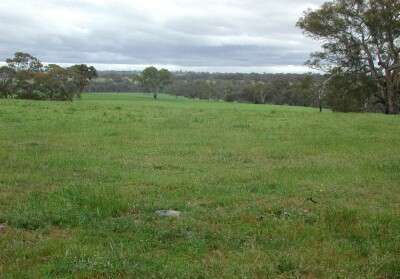IT17
Australian Soil Classification: Ferric (Reticulate?), ?, Brown CHROMOSOL (confidence level 3)
General Landscape Description: Gently undulating rises
Site Description: Lower slope
Land Unit: Dundas Redgum
Geology: Cainozoic duricrust
General Land Unit Description: This soil site occurs on the rises of the Tertiary duricrust. This land unit predominantly consists of Brown Chromosols with a ferric horizon, typically occurring above the clay subsoil. The soil is commonly developed over a highly weathered mottled zone. This red and white mottling, sometimes referred to as ‘tiger mottles’ is thought to be the result of deep chemical weathering which occurred during the late Tertiary period. Red gums are the dominant vegetation found on this surface.

Soil Profile Morphology:
Horizon | Depth (cm) | |||
A1 | 0–15 | Dark greyish brown (10YR4/2); sandy clay loam, weak fine subangular blocky structure; very weak consistence, moist; pH(field) 6; abrupt change to:
| ||
A2 | 15–30 | Yellowish brown (10YR5/4); light clay; weak fine subangular blocky structure; very weak consistence, moist; contains many coarse ferruginous nodules; pH(field) 6; abrupt change to:
| ||
B21 | 30–40 | Yellowish brown (10YR5/4), with a few faint medium orange mottles; heavy clay; weak fine subangular blocky structure; contains very few medium ferruginous nodules; pH(field) 6.5; clear change to:
| ||
B22 | 40-65 | Yellowish brown (10YR5/6), with many distinct medium red and pale mottles; heavy clay; strong fine subangular blocky structure; consistence weak, moderately moist; pH(field) 6. | ||
Key Profile Features:
- Many ferruginous nodules in A2 horizon
- Mottled subsoil
Profile Described By: Grant Boyle and Nathan Robinson, 26 October 2000.


